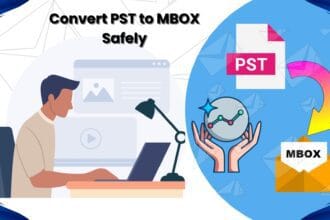
Digital or IT footprint is the trail a business leaves behind on the web and social media. It’s a term that has been around for a while. However, many business owners still don’t know why it’s an important aspect of their online behavior or why having a strong digital footprint is necessary to their success.
Why Is It Essential to Enhance a Brand’s IT Footprint?
A business needs an optimized digital footprint primarily because it’s critical to building awareness among online consumers. Of course, it isn’t the case a decade ago when consumers in need of something choose to visit a store in person.
However, today, especially since the pandemic has hit, consumers are already researching brands online when deciding where to spend their hard-earned money. They’re either looking at your website, social media pages, or reading reviews online to ensure that they’ll receive a quality product or service and enjoy great customer support.
With nearly 95% of shoppers already researching businesses online before making a purchase, companies have to really make the most of their IT footprint now more than ever.
Enhancing A Brand’s IT Footprint: 4 Tips to Ponder
Optimizing your business’s digital footprint may seem a straightforward process. After all, you already have a website set up, right?
Business owners become more confident when their websites have faster load times because they work with managed IT services Brisbane companies or wherever they’re operating. The truth, however, is that IT footprint optimization is more complex than it sounds.
To really ensure that you’re making the most of what your company does digitally, check out the following tips:
1. Improve the user experience on your website
Simply having a website for your business isn’t enough. Remember that it only takes less than a second for a visitor to decide whether to stay on your website or leave. That’s why you need a site that provides an excellent user experience—one that gives the functionality that your target market wants while marketing your current products and services properly.
So, ask yourself: Is your website easy to use? Do visitors feel comfortable when navigating your site? Is contacting you and requesting your services through your website a straightforward process?
To achieve a professional, user-friendly site, you need to use tools like Google Analytics that will help you truly understand what customers are doing on your website. It means knowing where they’re coming from and how long they stick around, among other things.
Data that you need to track closely include:
- User behavior: What are the things people actually do when interacting with your website? Understanding user behavior will help you discover areas on your site that are potentially causing you problems.
- Behavioral flow: Leveraging Google Analytics’ behavior reports will enable you to identify the specific pages on your website delivering the highest volume of traffic.
- Events: Events are user interactions with specific content on your site that you can measure independently from a web page. It comes in handy when measuring the success of flash elements, downloadable goods, pop-ups, ad clicks, and video plays.
- Audience insights: Google Analytics’ audience insights are a comprehensive breakdown of who really your website visitors are: It provides useful details, such as demographics, location, interests, and even devices used.
By keeping close track of the abovementioned data and others, you can spend more time doing what works to improve the user experience on your website and avoid wasting time doing what doesn’t.
2. Incorporate SEO tactics in managing your website and all of its content
Of course, if you really want to make the most of a website with an improved user experience, you have to take advantage of SEO or search engine optimization, too. Doing so increases your site’s searchability and visibility, thus offering even more value to your brand.
For example, when writing a blog, ensure that you’re incorporating effectively-researched and optimized keywords that will serve as a linchpin between what internet users are searching for online and the content you’re providing, increasing the chance of you being able to fill their needs.
Incorporating links to trustworthy and relevant websites within your blog is another best practice. Such a tactic can help you build your brand’s credibility.
3. Update your social media profiles with relevant content frequently
Social media is, no doubt, an essential part of your brand’s online presence. That’s why you have to ensure that your social media posts reflect your brand’s personality. Yes, you heard it right; it isn’t only all about the content of your website. It makes sense because customers will likely browse your social media profiles, too, to learn more about your business. Therefore, publish relevant content that will build your brand’s authority and give prospects a positive impression.
4. Add the latest information about your business to local business directories
Likely, you’ve signed up with local business directories, such as Google MyBusiness and Yelp, already. However, have there been any changes in the past that may impact your digital profile?
For instance, has your business moved to a new location? Maybe you have new opening hours? Don’t forget to update your local business listings so that they contain all of the correct details every time a potential customer comes across your brand online.
Also, since local business directories like Google MyBusiness also serve as review pages, ensure that you have a review management strategy in place to keep track and manage the reviews you’re generating on these platforms. It’s a crucial step to take since 84% of consumers nowadays trust online reviews as much as the personal recommendations that they receive from friends and family.
Conclusion
An optimized IT footprint is possible through website user experience improvement, search engine optimization, effective social media management, and up-to-date digital profiles. It will then result in a robust online reputation, which every business should prioritize in their digital marketing strategy.








